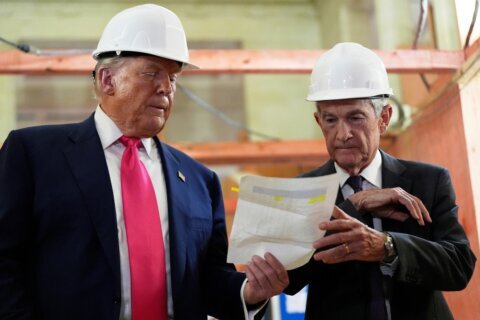Once upon a time — and given the fairy tale endings of each succeeding chapter, that’s the only way to begin this story — there was an entrepreneur named Jeff Bezos, who was so strapped for startup cash he put his earliest employees at desks made from doors and sawhorses. His 1994 creation was an e-commerce site for selling books, and he hit upon a magical name for it: Cadabra.com.
Or at least he thought it was magical. Then an attorney friend told him that Cadabra sounded an awful lot like cadaver. And so, wanting to avoid any premature death for his baby, the former Wall Street executive changed the moniker to Amazon.com (ticker: AMZN). Which many people thought was a dumb name. (Then again, lots and lots of people once said that about “Beatles.” Fame changes everything.)
Today, Bezos is the world’s wealthiest man, worth some $120 billion. That’s up, by the way, roughly $16 billion from January alone. To put that jump in perspective, it’s more than the $13.7 billion Amazon paid to gobble up Whole Foods in August.
[See: 7 of the Best Stocks to Buy for 2018.]
So if Bezos wanted to change the name back to Cadaver, there’s nothing that could kill the idea. And nothing, it seems, can stop him — not even a certain chief executive hammering away at his company via Twitter.
But given all this — and a company today worth in excess of $680 billon — there’s nothing stopping Bezos from granting a dividend either.
Taken one way, it’s a high-tech Riddle of the Sphinx: Why do ultra-rich guys like Bezos and the late Steve Jobs — blessed with ultra-rich companies — keep dividends off the table? It’s not as though Amazon stock has been a slouch: It’s up more than 40 percent since October.
“Amazon is being strategic with its cash,” says John Kilhefner, analyst and deputy managing editor at InvestorPlace. “While Amazon has more than $30 billion in cash and equivalents, Bezos wants to be sure that Amazon will have enough in its coffers should it face unforeseen headwinds or choose to make bold acquisitions.”
Given the non-stop tailwind Amazon has enjoyed over the last several years, that might seem entirely unnecessary, or at least a sticky point.
“Corporate finance theory suggests there is a signaling aspect to dividends; that is, the corporation’s management provides a positive signal of the future of a firm through raising its dividend,” say Bob Johnson, president and CEO of the American College of Financial Services in the Philadelphia area.
And yet, the dividend issue dovetails with any stock split possibility — or lack thereof. Between June 1998 and September 1999, AMZN split three times. And since then, nothing.
“I’m not sure why, but it seems in vogue today for companies to allow their share prices to attain a high per-share number and not opt for splitting,” says Tom Forte, managing director and senior research analyst who covers Amazon at D.A. Davidson.
[See: 8 Catalysts That Are Moving Amazon Stock.]
“If memory serves, Apple did not split its shares until it was in the hundreds of dollars,” Forte adds. “Berkshire Hathaway ( BRK.A, BRK.B) may be the best example of a stock with a high per share price that hasn’t split.” And if you can take out a second mortgage, you might be able to afford BRK Class A stock at $294,000 per share.
“Amazon would have to split its stock again to offer a worthwhile dividend,” Kilhefner says. At a share price of about $1,435, “a 1.5 percent yield would work out to $21.52 annualized, or about 84 percent of its operating cash.” (By the way, 2018 isn’t a far cry from the early 2000s, when the tech bubble sent Amazon shares skidding as low as $5.)
Here’s another way to do the math: Amazon has 500 million outstanding shares and made about $3 billion over the last year, says Phil Davis, CEO of Philstockworld.com and PSWInvestments.com.
“So even if they paid out all of their profits as a dividend, it would be $6 per share or 0.5 percent: not even worth the bother to issue,” he says. “They are a very long way from issuing any kind of dividend.”
The again, this hardly signifies AMZN is in bad shape in the marketplace. The e-commerce company that wins the race to integrate artificial intelligence wins overall — and Amazon has a huge lead on everyone else. Its predictive algorithms, for example, are the reason why items that fit your consumer tastes keep popping up when you log in.
Then there’s Alexa — which shares the name of the internet company Amazon bought in 1999. While Apple ( AAPL) had the voice-activated assistant turf to itself for a time, Apple’s refusal to open Siri to outside developers — a prejudice dating to the Jobs era — allowed Amazon to get started, catch up and take the lead. In a true blown opportunity, Apple may need years to match all the things Alexa, and even Google Assistant, can do now.
Meanwhile, there seems to be a 2018 headline every other week about a brick-and mortar chain Amazon has crushed to dust, whether that be Toys R Us or the teen jeweler Claire’s.
Some might say that in such pursuits, Bezos is relentless. And there, they’d be right, in more ways than they can imagine. When the name Cadaver hit the wastebasket, the hard-charging Amazon founder briefly considered renaming his website Relentless. He was talked out of that, too.
[See: 10 Earnings Reports to Watch from Big Tech Stocks.]
But he still owns the URL. Type in “relentless.com” and see where it redirects. Then, feel free to comparison shop for a brand new book of fairy tales.
More from U.S. News
7 of the Best Tech Stocks to Buy for 2018
11 Steps to Make a Million With Your 401k
20 Awesome Dividend Stocks for Guaranteed Income
Is it Prime Time for an Amazon.com, Inc. (AMZN) Dividend? originally appeared on usnews.com







